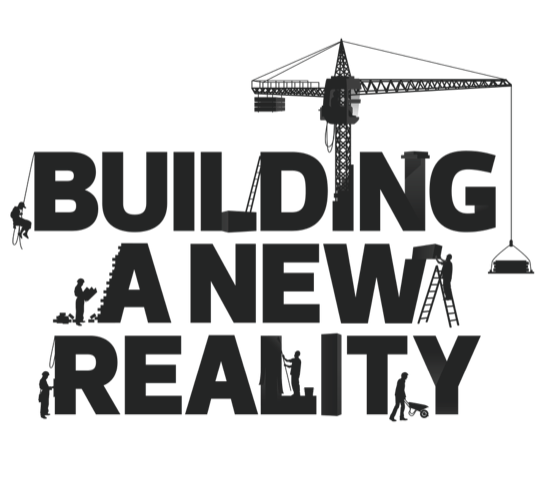“Raise your hand if you know the answer to this one,” challenged Lee Rush.
It was the morning of the third day of a four-day Basic Restorative Practices workshop held at the International Institute of Restorative Practices (IIRP) headquarters in Bethlehem, Pennsylvania.
Early winter storm clouds began gathering outside of the spacious conference room, where I’d spent the past few days learning about restorative circles as a means of resolving social problems and responding when harm occurs.
Weather reports predicted six to ten inches of snow. During the moments between group discussions, watching videos of restorative practices in classroom settings, and exercises in which we led restorative circles, my colleagues whispered nervously about cutting the training short to return to work and family back home.
Lee’s booming voice snapped our attention to the present:
“Restorative practices hypothesizes that people are happier, more cooperative and productive, and more likely to make positive changes in behavior…”
My arm shot up in the air.
“Yes, Kerra,” Lee said.
“When those in positions of authority do things with them, rather than to them or for them,” I said, completing the sentence.
“Great!” Lee said while tossing me a globe-shaped stress ball, embossed with the IIRP logo, as a “prize.”
“Here’s another one. The benefit of restorative practices in every setting of society—from school to the workplace to government—is…”
My arm shot up again.
“Yes, Kerra.”
“Is to offer individuals more voice and more choice, in exchange for taking more shared responsibility,” I parroted.
“You are correct!” Lee said.
“Were you studying last night while the rest of us were at the casino?” a fellow workshop participant leaned over and whispered.
I laughed. No, I didn’t spend evenings in my room at the Historic Bethlehem Hotel highlighting sections of a dog-eared copy of The Restorative Practices Handbook, while my colleagues were trying their luck at the Blackjack table in the nearby Sands Casino.
Rather, I was performing.

Performing Restorative Practices
“Performing” is the fourth stage in Bruce Tuckman’s Five Stages of Team Development.
Created by Tuckman, a psychologist, in 1965, the stages provide a framework to understand how groups coalesce and operate. In understanding the stages:
- forming
- storming
- norming
- performing
- adjourning (mourning)
we can anticipate and overcome the challenges and rewards of participating in a group, and learn to work within them, instead of fighting or being blindsided by them.
The “performing” stage is the sweet spot of team development, because it’s at this stage in which—according to Tuckman—“members are confident, motivated, and familiar enough with the project and their team that they can operate without supervision. Everyone is on the same page and driving full-speed ahead on their goal.”
By the third day of the Basic Restorative Practices workshop, I had been on a “restorative journey” for nearly a year.
I had read most of the IIRP’s books, and watched some of the IIRP videos covered in the course materials. I had witnessed the power of restorative practices to transform communities, while writing a profile of IIRP Board Member Henry McClendon’s efforts to reinvent Detroit as a “restorative city.” I had experienced a personal evolution, as restorative practices helped me to learn to trust the police after a traumatizing experience with them in my youth.
I didn’t think I could possibly learn much more at the Basic Restorative Practices training. Part of me resented leaving the 84-degree weather and interrupting a romantic fling with a handsome, Brooklyn-based arts writer in the small, Mexican Caribbean community where I live, to spend four days with a group of thirty strangers in freezing Bethlehem, Pennsylvania.
However, I hadn’t understood how much I absorbed the underlying philosophy of restorative practices, and how I could use my experiences to facilitate understanding and healing for others in my workshop group, until I could—and wanted to—answer Lee’s questions.
A Sleight of Hand
A sleight of hand occurs when you learn about restorative practices.
You embark on the journey, thinking restorative practices will teach you how to better manage other people. The truth is, restorative practices is really a pathway to identifying and restoring the broken places in yourself that call for healing.
In my case, the persistent tension of wanting to meaningfully contribute to a larger group, while simultaneously resenting my all-too-human need to belong, could only have been revealed in the unique group dynamics designed to occur at Basic Restorative Practices training. To truly understand, I had to experience those dynamics; not as a dispassionate observer or a writer, but as a participant, leading or playing a part in restorative circles and conferences.
I had thought that if I moved to Mexico, I would somehow be exempt from the messiness of life. But life—in the form of a phone call from BANR editor Ted Wachtel—found me on the shores of the Caribbean Sea, and asked that I rejoin the human race and maybe learn to trust life a little.
We can’t “perform” life or restorative practices as much as we are called to engage with them. Or, in the words of the former tagline of the Maryland State Lottery, “If you don’t play, you can’t win.”


